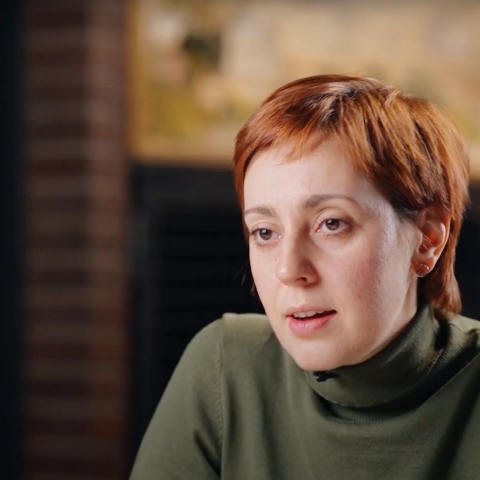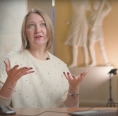-

Lecture course "Resonator"
-
Address:
The Satka.Lab project presents the “Resonator” Lecture Hall, an educational project that brings together spaces in Satka, where the creative vitality of the lecturers creates cultural and educational resonance. It consists of three series of lectures and podcasts recorded by experts on theater, contemporary art, and architecture of the XX-XXI centuries. The recording was made in the iconic public spaces of Satka – the Magnezit Museum, Palace of Culture “Magnezit” and “Art-Satka”. The lecture tells how the industrial environment affects art, architecture and life around it, which is especially important for Satka. Developed video lectures and podcasts form the educational online content created in Satka and designed for a broad audience.
At the moment, anyone can watch lectures by Irina Kudryavtseva, art critic, head of the Department of Art Programs and Creative Projects of the Ural branch of the Pushkin State Museum of Fine Arts; Olga Komleva, theater historian, director of the Underground Museum, producer of performing arts, and supervisor of multi-disciplinary projects in Yekaterinburg; and by Anastasia Yelizaryeva, chief editor and designer of Tatlin Publishing House from Yekaterinburg on the Art-Satka YouTube channel.
A course of lectures “The Artist and the Plant. From the History of National Art. 1920-2020” by Irina Kudryavtseva explores a century of relations between the artist and the plant. The author takes us through the romantic era of industrial art, where machines almost replaced easels for creators, through the time when plants have become an integral part of the landscape and the artist’s world, to the modern era, which is experiencing a revival of interest in the exotic industrial culture of contemporary artists. A review of the most successful cases of interaction between artists and plants leaves hope for an optimistic continuation of these difficult relations.
In the course of lectures “Industriality and Theater”, Olga Komleva, the creator of a number of contemporary theater projects, explores industriality in a theater context in a wide range from mechanistic ballets of the early XX century, through the avant-garde propaganda theater to the industry drama of stagnation times and further to modern theater practices of work in the field of industrial culture, namely to the creation of site-specific projects in industrial spaces.
A series of lectures “Palaces of Culture” by Anastasia Yelizaryeva is devoted to a look at workers’ leisure time through the lens of architectural history. It tells how the post-revolutionary arts center turned into a constructivist workers’ club, a multidisciplinary platform for an educational project of the 1920s, then, with the onset of the empire, it was overgrown with the overbearing tinsel of the architectural scenery of the Palace of Culture; in the 1960s, it dropped it off and gradually turned into a typical palace of culture. The metamorphosis is typical from the point of view of architectural history, but these are things happening to people here are of interest.
-
26.08 - 26.08
DIARY OF THE THIRD INDUSTRIAL BIENNALE
-
28.11 - 28.11
MY SATKA FESTIVAL WINS THE CONTEST OF CORPORATE VOLUNTEER PROJECTS
-
13.10 - 15.10
COOPERATION WITH VGIBL NAMED AFTER M.I. RUDOMINO


